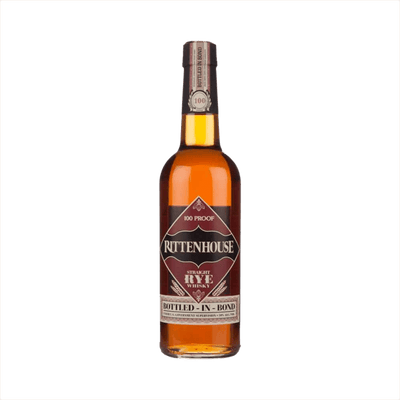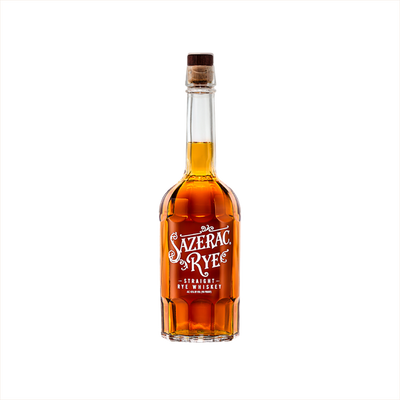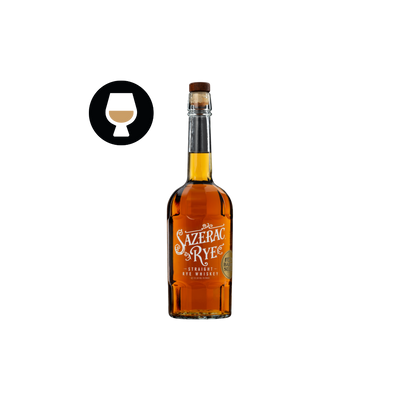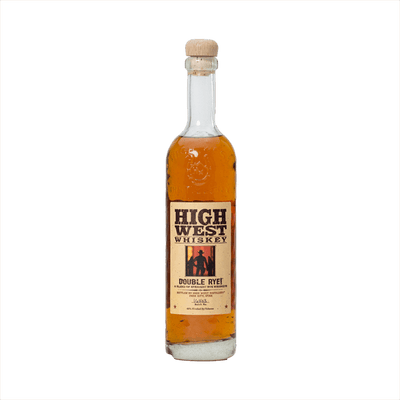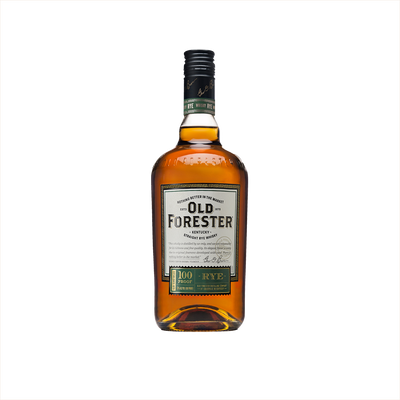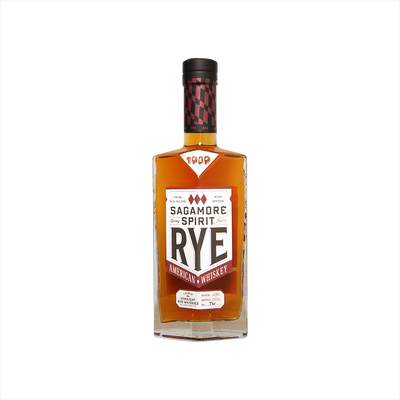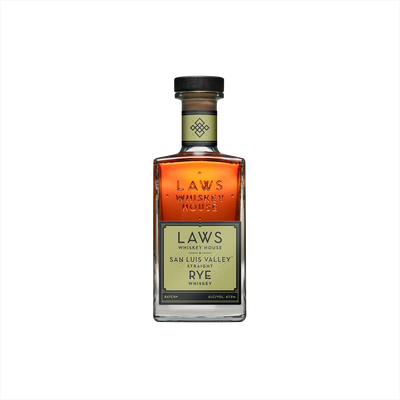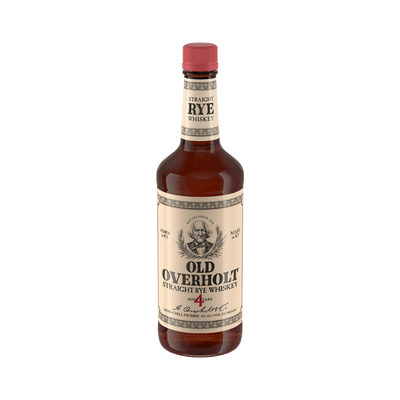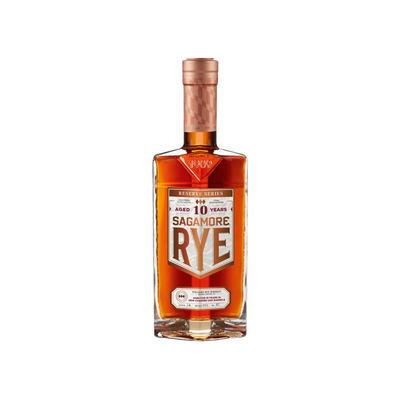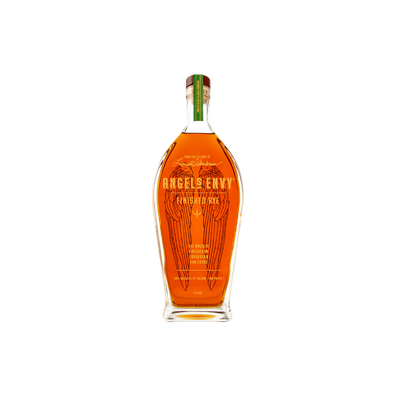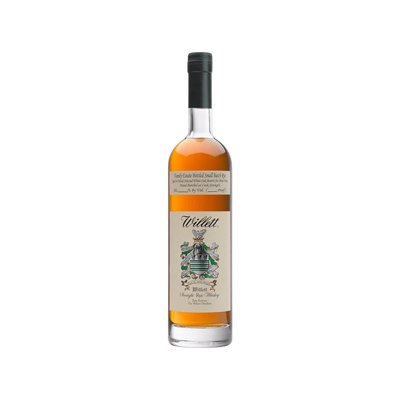Rye Whiskey
What is Rye Whiskey?
Rye whiskey is a distinctive type of Other Whiskey that must contain at least 51% rye grain in its mash bill, giving it a characteristically spicy and peppery flavor profile that sets it apart from bourbon's sweeter corn-forward taste. In the United States, rye whiskey must also be distilled to no more than 80% alcohol by volume and aged in new charred oak containers, though there's no minimum aging requirement unless it's labeled as "straight rye whiskey," which requires at least two years in barrel. This spicy grain creates a whiskey with bite and complexity, often featuring notes of black pepper, cinnamon, and dried herbs that make it a bartender's favorite for classic cocktails like the Manhattan and Sazerac.
Learn More About Rye Whiskey
What makes Rye Whiskey unique?
Rye whiskey stands apart from other whiskeys through its spicy, peppery character that comes from using at least 51% rye grain in the mash bill, compared to bourbon's corn-forward sweetness or the smooth maltiness of single malt Scotch. The rye grain brings bold flavors of black pepper, cinnamon, and dried herbs that create a drier, more assertive drinking experience than most other whiskey styles. This distinctive grain bill produces whiskeys with sharper edges and warming spice notes that shine both neat and in classic cocktails like the Manhattan and Old Fashioned.
How is Rye Whiskey made?
Rye whiskey starts with a mash bill containing at least 51% rye grain, which gets mixed with corn and malted barley before being fermented with yeast to create a low-alcohol wash. This wash goes through distillation in copper pot stills or column stills, concentrating the alcohol and developing flavor compounds from the spicy rye grain. The clear spirit then ages in new charred oak barrels, where it picks up vanilla, caramel, and wood notes while the rye's natural pepper and spice characteristics mellow and integrate over time.
How do you drink Rye Whiskey?
Rye whiskey shines brightest in classic cocktails like the Manhattan, Old Fashioned, and Sazerac, where its spicy backbone cuts through sweet vermouth and bitters beautifully. While purists love sipping premium ryes neat or with a splash of water to open up those peppery notes, most people discover rye's charms through mixed drinks first. The spirit's bold, spicy character makes it perfect for cooler months and sophisticated evening gatherings, though a well-made Whiskey Sour with rye can be surprisingly refreshing on a summer afternoon.
How do I choose good Rye Whiskey?
Start by checking the mash bill – ryes with 95% or higher rye content deliver bold, spicy punch perfect for Manhattans and Sazeracs, while 51-60% rye offerings provide smoother sipping with enough character for Old Fashioneds. For neat drinking, look for age statements of 4+ years and consider wheated ryes or those with higher corn content for mellower profiles. Your cocktail choice should guide your selection: high-rye expressions cut through sweet vermouth beautifully, while softer ryes work better in spirit-forward drinks where you want whiskey flavor without overwhelming spice.
Nutritional Information
Typical Calorie Range per Ounce: 64-70 calories
Typical Carbohydrate Range per Ounce: 0-0.1 grams
Typical Sugar Range per Ounce: 0 grams
Typically Gluten Free: No
Rye whiskey is distilled from a mash bill containing at least 51% rye grain, which naturally contains gluten proteins. While the distillation process removes most proteins, some individuals with celiac disease or severe gluten sensitivity may still react to rye whiskey. Those with gluten concerns should always check detailed product information and consult with their healthcare provider before consuming any grain-based spirits.
Scrolled this far? Your reward? Rye Whiskey Trivia!
- George Washington wasn't just our first president – he was also America's biggest whiskey distiller. His Mount Vernon distillery produced 11,000 gallons of rye whiskey in 1799 alone, making him the country's largest commercial whiskey producer. The founding father's recipe called for 60% rye, 35% corn, and 5% malted barley, and you can still taste a recreation of his whiskey at Mount Vernon today.
- Rye whiskey nearly went extinct in America, dropping from hundreds of distilleries in the 1800s to just one – Old Overholt – by the 1980s. The grain that built American whiskey culture was saved by bartenders rediscovering classic cocktails like the Manhattan and Sazerac, which taste flat and boring when made with anything else. Now there are over 100 rye whiskeys on the market again.
- Canada produces more "rye whisky" than anyone else, but most Canadian rye contains little to no actual rye grain. Canadian law allows distillers to call any whisky "rye" regardless of the mash bill, a tradition dating back to early Canadian settlers who associated the spicy flavor profile with rye grain even when using other grains to achieve it.
- During Prohibition, Canadian rye whisky was so popular with American smugglers that "Rye" became slang for any illegal alcohol. Hiram Walker's Canadian Club rye was particularly prized, leading to the phrase "getting rye" meaning getting drunk. This Canadian connection is why many classic American cocktail recipes specifically call for rye – bartenders were used to working with the smuggled Canadian stuff.
- The word "cocktail" might owe its existence to rye whiskey. The first printed definition of "cocktail" appeared in 1806, describing a mixture of spirits, sugar, water, and bitters. The most popular base spirit at the time? Rye whiskey from Pennsylvania and Maryland. Some etymologists believe the term comes from the practice of using a rooster's tail feather to stir rye-based drinks in colonial taverns.
Higher-proof spirits can be intense. Mix carefully, taste thoughtfully, and enjoy responsibly.
Gift message (optional)

